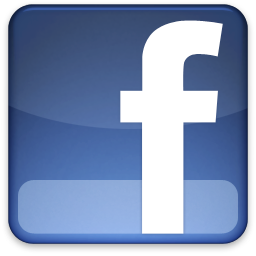Common Terms and Definitions
Big Brake Kit (BBK): An upgrade to stock brakes, bigger calipers, rotors (which may be slotted, cross drilled, or both) and upgraded brake lines, these will give you more stopping power. Fitment of aftermarket wheels must be carefully considered when installing on a vehicle equipped with a BBK.
Bolt Pattern: The bolt pattern is the number of lug nuts or wheel studs on the wheel hub. As the bolts are most often evenly spaced, the number of bolts determines the pattern. For example: smaller cars have three. Compact cars may have four bolts. Most United States passenger cars have five bolts. Pickup trucks and large SUVs can have as many as six or eight. The bolt pattern is generally measured in millimeters or inches.
Center Bore (CB): The centerbore of a wheel is the size of the hole in the back of the wheel that centers it over the mounting hub of the car. Some factory wheels have a centerbore that matches exactly with the hub to reduce vibration by keeping the wheel centered. Wheels with the correct centerbore to the car they will be mounted on are known as hubcentric. Hubcentric wheels take the stress off the lug nuts, reducing the job of the lug nuts to center the wheel to the car. Wheels that are not hubcentric are known as lugcentric, as the job of centering is done by the lug nuts assuming they are properly torqued down.
Centerbore on aftermarket wheels must be equal to or greater than that of the hub, otherwise the wheel cannot be mounted on the car. Many aftermarket wheels come with "hubcentric rings" that lock or slide into the back of the wheel to adapt a wheel with a larger centerbore to a smaller hub. These adapters are usually made of plastic but also in aluminum.
Finish: The wheel finish generally refers to the color, process, and/or material that is applied to the raw material of the wheel. The result is a finished product that may offer a polished, brushed, painted, and/or powder coated surface. Some custom finishes include carbon fiber, pin-striping, etc.
Monoblock Wheels: The Monoblock wheels are a 1-piece wheel constructed from a single piece of material.
Multi-Piece Wheels: This type of wheel utilizes two or three components assembled together to produce a finished wheel. Multi-piece wheels can use many different methods of manufacturing. Centers can be cast in various methods or forged. The rim sections for 3-piece wheels are normally spun from disks of aluminum. Generally, spun rim sections offer the ability to custom-tailor wheels for special applications that would not be available otherwise. The rim sections are bolted to the center and normally a sealant is applied in or on the assembly area to seal the wheel. The 3-piece wheels are most popular in the 17" and larger diameters.
Offset: The offset, measured in millimeters, can be negative or positive, and is the distance from the hub-mounting surface to the rim's true centerline. A positive offset means the hub-mounting surface is closer to the outside edge of the wheel, i.e. the wheel wraps around the hub and brake hardware more deeply; a negative offset means the hub-mounting surface is closer to the inside edge of the wheel and wheel sticks outwards more than inwards.
When selecting aftermarket wheels, a wheel with too little positive offset will be closer to edge of the fender, and one with too much positive offset will tuck inside the fender and be closer to the suspension components. Wheel width, offset and tire size all determine the way a particular wheel/tire combination will work on a given car. Offset also affects the scrub radius of the steering and it is advisable to stay within the limits allowed by the vehicle manufacturer. Because wheel offset changes the lever-arm length between the center of the tire and the centerline of the steering knuckle, the way bumps, road imperfections and acceleration and braking forces are translated to steering torques (bump-steer, torque-steer, etc.) will change depending on wheel offset. Likewise, the wheel bearings will see increased thrust loads if the wheel centerline is moved away from the bearing centerline.
In other words using the stock wheel offset number as the starting point, a lower off set number makes the wheel stick out more and a with higher number it sticks out less. (Lower is out more, higher is in more.)
Wheel Diameter: The wheel diameter is the distance from one end of the circular face to the opposite side. The distance is determined in inches. Common wheel diameters range from 14” to 22”.
Wheel Width: The wheel width is the distance from one side of the wheel to the opposite side. The distance is determined in inches. Common wheel diameters range from 7.5” to 13”.










